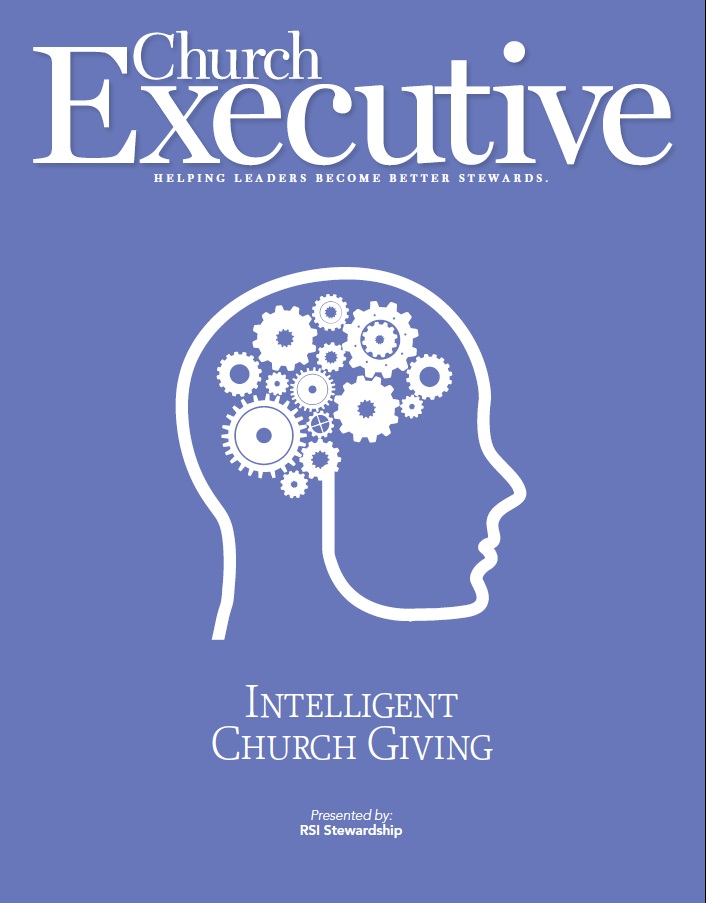
10 questions to ask when evaluating your church’s generosity in 2017
By Joel Mikell & Derek Hazelet
If you really believe God has called you to accomplish the vision you have for your ministry next year, then you owe it to yourself, your staff, and the people who support you to make sure you appropriately steward the time, talent and treasure God has already brought to you.
 Your ministry is too important to be left to “going with your gut” or hoping things will work out.
Your ministry is too important to be left to “going with your gut” or hoping things will work out.
To help, we wanted to share 10 questions you can use to evaluate your strategy for cultivating generosity and make the adjustments needed to enhance your efforts next year.
#1: What percentage of your attendees are actively contributing to your budget?
A church can grow exponentially in attendance — and even participation — but not in givers. This is unsustainable.
Measuring the percentage of people who are actively giving can ensure that you’re not setting yourself up for a crisis when your budget can’t keep up with the ministry expenses necessary to operate a fully functional and growing ministry.
#2: How frequently are people giving?
Churches have historically depended on consistent frequency of giving. As the way people are paid and give has shifted over time, it could create issues. Evaluating how frequently people give not only helps you allocate expenses, it can help you identify potential areas of improvement, such as encouraging people to give more frequently or intentionally reminding people about the impact their gifts make.
#3: Do you know how many people have stopped giving — or decreased their giving — in the past year?
Giving is a key indicator of engagement, just like attendance. When individuals suddenly stop giving, or give less, it often indicates circumstances that could reveal a ministry opportunity you might not have known about earlier.
Does your church have a system in place that recognizes when someone stops giving? This isn’t about fleecing the flock; it’s about paying attention and enhancing your ability to minister to people in your church.
 #4: How many faithful givers stopped giving this past year?
#4: How many faithful givers stopped giving this past year?
Giving is also a way people can “speak” their commitment to your church’s vision and mission. This is especially true for people who have been faithful givers for multiple years.
According to our research, it takes between eight and 12 new givers to replace one faithful, multi-year giver. Knowing that faithful givers have stopped giving can serve as an early indicator of negative trends that might compound over time if not addressed.
#5: Did online giving make up a greater percentage of overall giving this year?
Almost every church that has experienced an overall increase in giving is receiving it through online contributions, via a mobile app, website or kiosk. The more people who give consistently online, the more predictable cash flow will become. Growth in online giving indicates how well you’re communicating the various ways people can become part of the giving engine of your church.
#6: How dependent are you on major gifts for annual budget giving?
Being overly dependent on a handful of major contributions to fund your ministry budget can create significant issues or challenges down the road. At the same time, failing to develop financial leaders can limit your ministry potential. Having a healthy balance is critical for a sustainable ministry budget.
#7: Do people feel like they’re a vital part of the impact your church is making through their gifts?
The expectations and attitudes of church members is different than it was 20 years ago. People want to know the money they give is making a difference. At the same time, they’re constantly being asked for donations from dozens of other nonprofits that are sharing stories of impact.
Retention is one way of measuring this idea. Another way is to survey people directly to determine if what you want the message to be is what’s being heard and embraced.
#8: Do you have an intentional strategy for leading people from first-time givers to faithful, multi-year givers?

Our research shows that average retention rates for first-time givers is around 30 percent. However, if they give for three consecutive years, retention jumps to 75 percent. Having a strategy to intentionally engage people from their first gift through their first three years as a giver is an important part of “closing the back door” of your church’s assimilation process.
#9: How timely is your follow-up when someone takes a step toward your ministry?
Timely follow-up is an important part of building relationships with first-time givers. It’s important to be proactive and intentional in engaging new givers by acknowledging their gift individually. Our research shows that following up with a first-time giver within the first week of their donation has meaningful impact.
#10: What feedback mechanisms do you have in place to evaluate your efforts throughout the year?
If you truly want to implement the ideas needed to increase generosity, it’s important to evaluate your efforts more than once a year during the budgeting season, or monitoring the same things year after year. Having an intentional process that helps you monitor your specific efforts throughout the year is important for reaching your goal.
How to get beyond going with your gut
Ministry is more than numbers. However, your church has limited time, energy, staff and money to accomplish the things God is calling you to do next year. Therefore, you need to make sure the effort and resources you are investing personally and through your staff are providing a worthy return.
Taking the time to ask these questions, evaluate your efforts, and identify ways to improve not only helps you get beyond going with your gut, it provides more clarity and confidence than ever before when it comes to funding your vision for ministry.
Joel Mikell is president at RSI Stewardship. Follow him on Twitter or find him on Facebook.
Derek Hazelet is senior vice president at RSI Stewardship. Find him on Twitter or LinkedIn.
Want to dig deeper into each of these questions? We created a free resource to help. Download it now!


